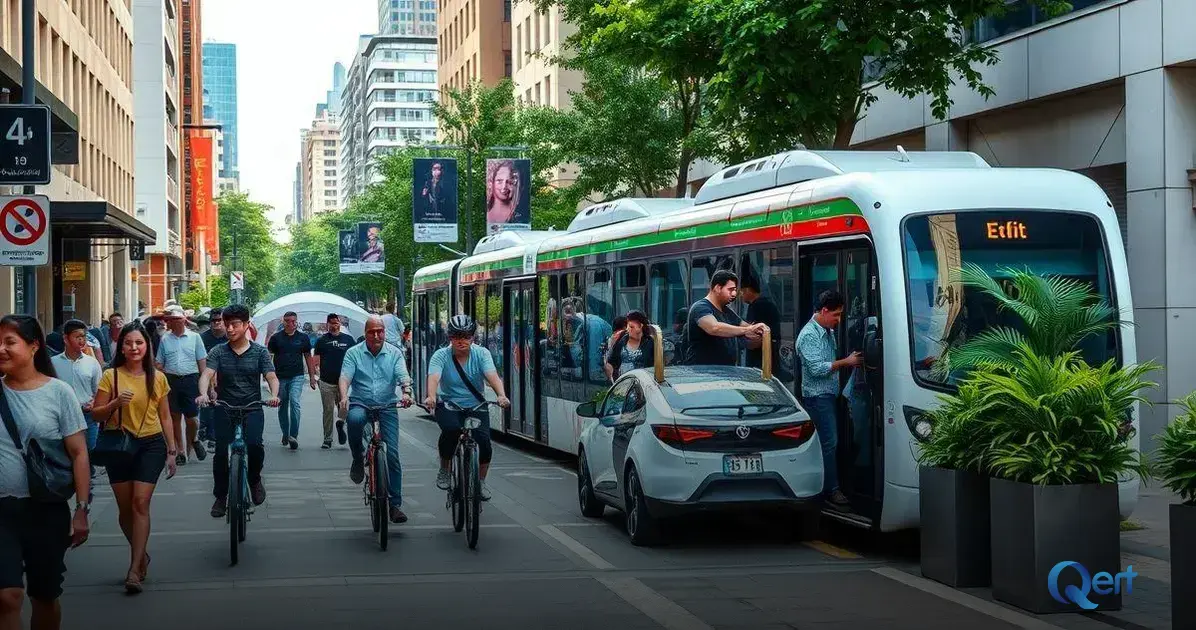ADVERTISEMENT
Adopting eco-friendly lifestyle tips can make a significant difference in our world. Small changes in your daily routine can reduce waste, save energy, and promote sustainability. By choosing greener options, you positively impact your community and the environment.
From simple habits to shopping sustainably, there are countless ways to embrace an eco-conscious life. Making these adjustments not only benefits you, but also fosters a healthier planet for future generations.
Keep reading to discover unexpected insights and valuable tips that will inspire your journey towards a greener lifestyle!
What is an Eco-Friendly Lifestyle?
An eco-friendly lifestyle means making choices that are good for the planet and help protect it. This type of lifestyle involves using less energy, reducing waste, and choosing sustainable products. By being more aware of our daily habits, we can all become part of the solution to environmental problems.
Living eco-friendly also encourages us to recycle, reuse, and reduce our consumption of resources. Simple actions, like using reusable bags or turning off lights when we leave a room, can lead to big changes. It shows that every little choice matters and contributes to a healthier Earth.
When people choose an eco-friendly lifestyle, they often feel more connected to nature and their communities. It creates a sense of responsibility towards not just our own lives, but also future generations. By taking steps today, we can leave the world a better place and share these values with others.
Benefits of Going Green
The benefits of going green are numerous and can positively impact both our health and the environment. By choosing eco-friendly products and making simple changes in our daily lives, we can reduce pollution and minimize waste. This not only helps keep our planet clean but also leads to a healthier lifestyle for ourselves and our families.
Going green can also save money in the long run. Using less energy at home by switching to energy-efficient appliances or utilizing public transportation can lower utility bills and fuel costs. Many eco-friendly practices, like growing your own vegetables or using reusable items, not only support the environment but also save you money.
Additionally, adopting a green lifestyle fosters community and encourages others to join in. When people see you making eco-friendly choices, it inspires them to do the same. This creates a ripple effect, where more individuals and families begin to care for the environment, contributing to a stronger, healthier community.
Simple Eco-Friendly Habits

Simple eco-friendly habits are easy to adopt and can make a big difference. One great habit is turning off lights and unplugging electronics when not in use. This saves energy and helps lower your electricity bill. Every little effort counts, and it can become second nature over time.
Another simple habit is using reusable bags, bottles, and containers. Instead of buying single-use plastics, choose items that you can use over and over. This helps to reduce waste and is better for our planet. Plus, many stores offer discounts for bringing your own bags!
Finally, try to walk or bike instead of driving whenever possible. Not only is this good for the environment, but it also keeps you active and healthy. Incorporating these small changes into your daily routine can lead to a big impact on the planet.
Sustainable Shopping Tips
Sustainable shopping means making choices that are good for the planet while buying what you need. One effective tip is to look for products that are made from recycled materials. These items not only reduce waste but also support manufacturers who prioritize the environment. Whenever possible, read labels to choose products that are eco-friendly.
Another great tip is to shop locally. Buying from local farmers’ markets or shops reduces the carbon footprint caused by transporting goods over long distances. Plus, it supports your community and helps you find fresh, seasonal produce. Local products often come with less packaging, which is another bonus for the environment.
Lastly, consider buying second-hand items. Thrift stores and online marketplaces have plenty of quality goods at reduced prices. By choosing used items, you help extend the life of products and reduce demand for new manufacturing. This way, you can save money and contribute to a more sustainable future.
Reducing Waste in Daily Life
Reducing waste in daily life is easier than you might think. One simple way is to start using reusable products instead of disposable ones. For example, carrying a reusable water bottle and coffee cup can save thousands of plastic containers from ending up in landfills. These small changes add up quickly and help the environment.
Another effective strategy is to plan meals and create shopping lists before heading to the store. This reduces the chances of buying too much food, which often gets thrown away. By only purchasing what you need, you save money and minimize food waste. Furthermore, using leftovers creatively can be a fun way to enjoy meals without waste.
Lastly, be mindful of packaging when shopping. Choose products with minimal or compostable packaging. These choices not only lower waste but also encourage companies to adopt more sustainable practices. Together, we can make a big impact by being intentional about the waste we create.
Eco-Friendly Transportation Options

Choosing eco-friendly transportation options can significantly reduce the impact of our daily commutes on the environment. One of the best ways to do this is by walking or biking for short trips. Not only does this help cut down on carbon emissions, but it also keeps you healthy and active. Plus, walking and biking allow you to enjoy your surroundings and appreciate your community more.
If the distance is longer, consider using public transportation. Buses, trains, and subways are often more efficient than traveling in a single car, reducing traffic and pollution. Many cities are expanding their public transit options, making it easier to opt for these greener modes of travel.
For those who need to drive, switching to an electric or hybrid vehicle can make a big difference. These cars use less energy and produce fewer emissions than traditional vehicles. Additionally, many charging stations are now available, making it convenient to recharge while out and about. Choosing eco-friendly transportation not only benefits the environment but often saves money as well.
Creating a Green Home
Creating a green home starts with making smart choices about energy use. One easy step is to switch to energy-efficient light bulbs. These bulbs use less electricity and last longer than regular ones, helping you save money and reduce your carbon footprint. Additionally, unplugging gadgets when not in use can also decrease energy consumption.
Another way to make your home greener is by using natural materials for decoration and furniture. Look for items made from recycled or sustainable resources. Using non-toxic paints and cleaners is equally important since they improve air quality and create a healthier living space for your family.
Incorporating indoor plants into your home is a fun way to boost your green efforts. Plants not only improve air quality but also bring life and color into your space. You can also set up a composting system for kitchen scraps, which is a great way to reduce waste while creating nutrient-rich soil for a garden.
Incorporating Nature into Your Life
Incorporating nature into your life can bring many benefits for your physical and mental health. One simple way to do this is by spending more time outdoors. Whether it’s taking a walk in the park or hiking on a trail, being in nature can improve your mood and reduce stress. These activities allow you to connect with the environment and enjoy the beauty around you.
Adding greenery to your home is another great way to invite nature inside. Indoor plants not only enhance the look of your space but also help purify the air. Easy-to-care-for plants like succulents and snake plants are perfect for beginners. You can even create a small herb garden in your kitchen, providing fresh ingredients for your meals.
Finally, try to engage in nature-based activities as a family. Camping, gardening, or birdwatching can create lasting memories and teach kids about the importance of nature. Participating in these activities fosters a deeper appreciation for the environment and encourages a commitment to protecting it for future generations.
Adopting an eco-friendly lifestyle is essential for protecting our planet and ensuring a healthy future for generations to come. This involves making simple choices that can have a significant impact, such as reducing plastic use and conserving water. By being mindful of our consumption habits, we can contribute to a more sustainable world.
Every small change we make can lead to positive outcomes. For instance, using a reusable water bottle instead of plastic bottles helps cut down on waste. Additionally, turning off lights and appliances when not in use can save energy and lower utility bills. These actions, while small, promote a culture of sustainability.
Finally, spreading awareness about eco-friendly practices is vital. Sharing tips with friends and family can inspire them to join in. Organizing neighborhood clean-ups or community gardens engages others and fosters a strong sense of community. Together, we can build a greener tomorrow for everyone.
Discover more about Life Style Medicine and learn how healthy habits can transform your well-being and quality of life.







